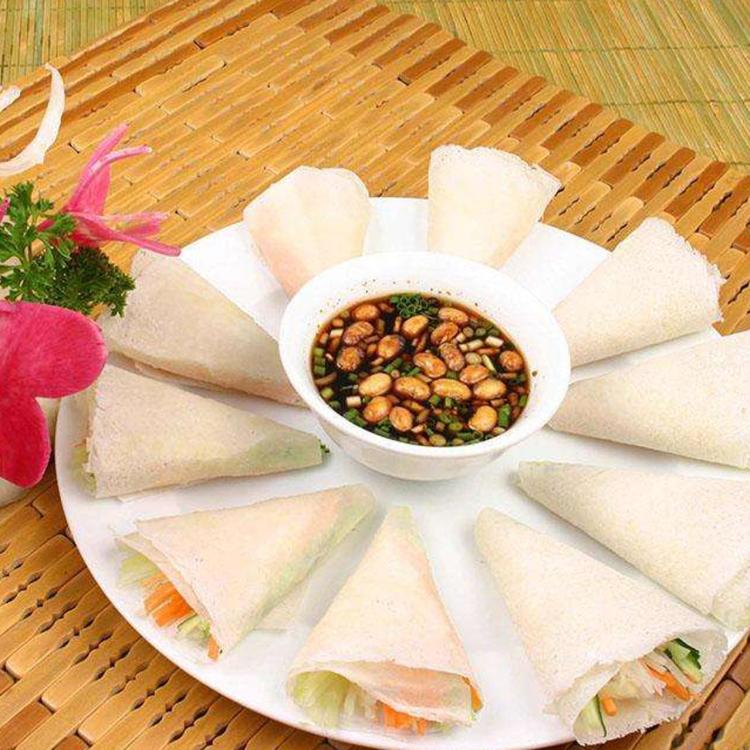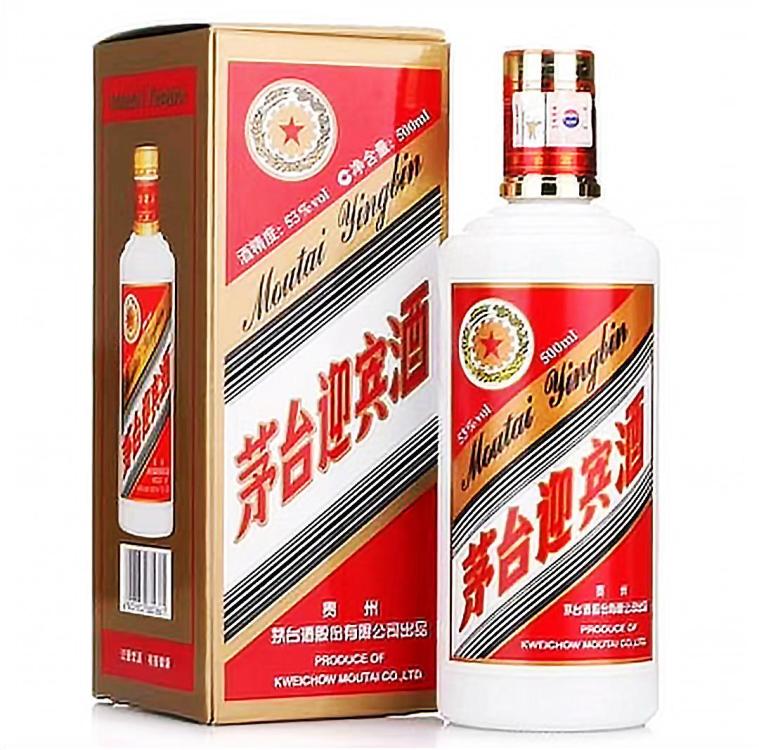-
Posts
16,752 -
Joined
-
Last visited
Content Type
Profiles
Forums
Store
Help Articles
Everything posted by liuzhou
-
It's called skin. You keep potatoes in the fridge? Why?
-
er Google returned this. Hosta - Wikipedia also known as plantain lily, although technically that is just one specific cultivar of hosta.
-
It is certainly possible to make the noodles at home, but extremely few people do. It takes a lot of skill and it's considerably cheaper here to buy them pre-made. The actual dish is easy once you have the noodles.
-
Miserable day. I awoke this morning at 6:30 and crawled to the kitchen around 7:00 to find I had no water supply. Now 8:30pm and still none. A major city-wide failure. I've never known anything like it. So no cooking. I managed to find a tiny pocket of the city with a functioning watered restaurant and ordered this for delivery. I don't know what you call it but the restaurant and I call it a Sichuan flavour boneless chicken and salad wrap. They offer it sauced in four spiciness levels: un-spiced, mildly spiced, damn spicy and what I would call volcanic but for some reason, they call 'tequila'. I went for damn spicy. And damn fine it was, too, despite its looks.
-
Yes, I've seen 油泼扯面 (yóu pō chě miàn) translated as 'hot oil noodles', 'slippery oil noodles' 'oil-sprinkled noodles' and others.
-
For a long time after biang biang mian appeared on the streets of China’s ancient city of Xi’an in the early 2000s, signs or menus utilising the name were all hand painted. It appeared in no dictionaries and was impossible to enter as a computer character. However the dish was far from new. I ate it often when I lived in Xi’an in the 1990s, yet never saw that name. It was 油泼扯面 (yóu pō chě miàn), literally ‘oil-splashed torn noodles’ and very popular. Some restaurants in Xi'an today sell 油泼扯面 to the locals and Biang Biang noodles to the tourists at a higher price! Today the character used to describe them is more famous than the actual dish. It is said to be the most complex character in Chinese, made up of 42 separate strokes in the most widely accepted version. The character is said to be onomatopoetic, ‘biang’ resembling the sound of the smack of the dough hitting the table when they are being stretched. 面 (miàn) means wheat noodles. The trouble is the biang character is a new and unofficial invention. Its origin is murky, with a cited notion that it was invented in the Qin Dynasty (221–206 BC) having been long debunked. There is no record of it before the 2000s. The most likely and accepted story is that it was invented as a marketing tool by one of Xi’an’s more imaginative noodle shop owners (although no one agrees which one). There is another story believed by some that it was invented by a local university student as a way to pay for a meal he could otherwise ill afford. Again, which university, and Xi’an has several, is never identified. It took until March 2000 for the character to be added to Unicode in version 13.00, but that version has still not been adopted into all platforms or fonts. However, it is now here on eG. 𰻝𰻝面 (biáng biáng miàn) Rather idiotically in my view, some clown has gone on to develop a Traditional Chinese version, 𰻞𰻞麵. (‘Traditional’ Chinese). However, the size can't be altered in the trad font. hmmm. Apart from the question as to how can anyone invent a new ‘traditional’ anything, Traditional Chinese is very rarely used in mainland China where the dish’s new name concept was invented. Also, others have sought to ‘improve’, on the original by adding even more strokes, with versions including up to 70 strokes. I have only given the most accepted version (and the ‘traditional’ one for its very slight amusement value). Here is my local biang biang shop. As you can see they couldn’t write biang biang other than in Roman letters The shop name 忆长安 biangbiang 面 means Remembering Chang’an Biangbiang Noodles, Chang’an being the ancient name of Xi’an, in the Tang Dynasty (618–907 AD) the largest and richest city in the world. And their noodles. PS. The character 𰻝 still appears in no Chinese dictionaries.
-
-
It seems like chilli peppers in general like lots of light and are heavy nutrient feeders Chilli peppers are my most successful balcony crop (in a very short list). My success I put down to fortuitously having a generous supply of sunlight on my east facing balcony. (And yes the same feeding regimen of bloom nutrient.) I stick to local cultivars such as 'facing heaven'.
-
I don't know about everywhere, but here in southern China, autumn and early winter is very much sausage making season with many people getting involved. I believe it's derived from the fact that sausages were invented to preserve meat for the coming winter. Same with curing in general.
-
... and so I reach the end of my quest. I have covered 26 distinct cuisines here (but there are countless subcategories. There are more provinces but they are mostly very similar do their neighbours and I don't think merit a 'cuisine' category of their own. Hong Kong and Macao I'm leaving out, too. When they are being Chinese they are predominantly Cantonese but are also heavily influenced by Europe and beyond, particularly the UK for HK and Portuguese for Macao. Finally, the cuisine my home region of Guangxi has its own topic here where I've dived deeper. .
-
湖北菜 (hú běi cài), Hubei Cuisine, 楚菜 (chǔ cài ), Chu Cuisine Hubei borders Henan to the north, Anhui and Jiangxi to the east, Hunan to the south, and Chongqing and Shaanxi the west. The famous Three Gorges Dam is located at Yichang in the west of the province. Hunan means ‘south of the lake’, whereas Hubei means ‘north of the lake’, the lake being Dongting Lake, China’s second largest freshwater lake. Unsurprisingly this has an impact on the cuisine and it is also well-known in Chinese culture as the place of origin of rice, dragon boat racing and is home to the critically endangered Yangtze finless porpoise. This file is licensed under the Creative Commons Attribution-Share Alike 3.0 Unported license. The recorded history of Hubei cuisine as known today stretches back over 2,000 years with recipes and descriptions recorded in the text known as the ‘Chuchi’ of Qu Yuan. Clearly, water is important here. Not only is it in the lake but also in the five main rivers feeding the lake as well as many minor lakes, irrigating Hubei and Hunan’s fertile lands as well as supplying freshwater fish, far from the sea. I didn’t eat a seawater fish in all the time I lived in Hunan in the 1990s. It is said that Hubei’s waters are home to over 50 different fish species. The watery aspect of their life extends perhaps into their meals. Soups are particularly popular. These are made using the usual meats beef, chicken, pork etc, but pork rib with lotus roots is probably favourite and has now spread across the nation. I avoid it. It’s what every hospital in China serves you to ‘build you up’. Turtle soup is considered the most nutritious, but I don’t see how. You’re unlikely to get that on your sickbed however – too expensive. The range of vegetation you might find in your soup besides lotus root is infinite. They also love to play with balls. Meat balls, fish balls, prawn balls turn up in your soup, or elsewhere. There are literally hundreds of variations and even ‘ball restaurants’ around town. So go to Hubei and have a ball! Two things more stand out in their cuisine. First is an aversion to using colourful garnishes or decorations on their food, instead believing that to truly appreciate the meal you should be able to see the food as nature intended and dishes are required to maintain the original colour, taste and sauce while cooking. The other is that Hubei dishes are often served with multiple ingredients in any one dish in combinations you might not expect. Fish, pork, crab and tofu or anything else could turn up together in any one dish. Some dishes. I guess it makes sense to start with breakfast. This is arguably Wuhan, Hubei’s capital’s favourite breakfast. 热干面 (rè gān miàn) the rather prosaic sounding ‘hot dry noodles’. These are eaten by workers rushing to their labours, by schoolkids dawdling to school, by everyone. Of course they aren’t just hot dry noodles. The come mixed with soy sauce, sesame paste, pickled vegetables (carrots and beans), chopped garlic chives and chili oil at minimum and can be bought from street carts up to restaurants, from down at the docks to plush business areas. Truly, the people’s food. Hot Dry Noodles Later we might have 龙凤配 (lóng fèng pèi), Dragon and Phoenix. This is a stew of, not of Hollywood stars, but good old fish and chicken. This is also a popular dish to serve at wedding banquets. China likes dragons – whereas they are generally considered heralds of evil in the west, in China they are the polar opposite. Similarly phoenixes are good, signifying rebirth. Chickens’ feet are served as ‘phoenix claws’. Dragon and Phoenix Yingshan is a county in the east of the province and well-known for its dish 应山滑肉 (yìng shān huá ròu), a dish of fatty pork belly in a sauce. This is an ancient dish sometimes called Yingshan Smooth Pork. It was, according to legend, invented when Taizong, the second Emperor of the Tang Dynasty lost his appetite and his chef saved the day. Most Chinese dishes have a fanciful story! Emperor's Fat Pork 红烧野鸭 (hóng shāo yě yā) is a captive-reared mallard, braised with sugar. This I was wary of. I was concerned it may be too sweet for me, but it was OK – not up there with a roast duck, though. I have no objection to braised dusk but prefer it in wine. Then I discovered it is just actually "red-cooked" i.e. braised in soy sauce with a little rock sugar. Braised Mallard 红菜苔炒腊肉 (hóng cài tāi chǎo là ròu) The menu in one restaurant (unusually in English) described this as sautéed preserved pork with red vegetables – not very helpful. It’s actually cured pork with Chinese kale. They got the ‘sautéed’ part right! Red Kale with Cured Pork - Image: pic.nximg.cn And finally, for your encouragement and well-being, a recipe for Hubei’s favourite contribution to the health service, 排骨藕汤 (pái gǔ ǒu tāng) Lotus Root Soup, supplied by Hubei government. Get Well Soon
-
江西菜 (jiāng xī cài) Jiangxi Cuisine, 赣菜 (gàn cài) Gan Cuisine Jiangxi Province lies on the south bank of the Yangtse River and borders Anhui to the north, Zhejiang north-east, Fujian to the east, Guangdong to the south, Hunan to the west and Hubei to the north-west. Despite bordering five of the eight traditional cuisines of China, it never ranked itself. This file is licensed under the Creative Commons Attribution-Share Alike 3.0 Unported license. This may be because rather than elegant fancy dishes, Jiangxi has a reputation for a more homely style of cooking, even in its restaurants – not that that is a negative criticism. It is also the most eastern of China’s provinces with a reputation for spiciness, with chilli peppers often be using as a vegetable rather than a seasoning. They also often make heavy use of fermented black beans. Jiangxi Chopped Mixed Chillies Simmering and stir-frying are the major techniques used and cold or raw dish are very rarely featured. The abundance of freshwater (Jiangxi is landlocked) leads to plethora of fish dishes, often stewed and served at popular fish banquets. Smoked and dried meat is often cooked. Unusually, compared to most of China, most of Jiangxi’s frying employs 山茶油 (shān chá yóu), camellia oil, aka tea seed oil as its go-to. That said it is also widely used here in Guangxi and in Hunan among the ethnic minorities. Do not confuse it with tea tree oil, which is inedible. Camellia Oil Perhaps the most famous dish from this province is 宁都三杯鸡 (níng dū sān bēi jī), Ningdu Three Cup Chicken, although there is another version in Taiwan. This dish originated among the Hakka people of Jiangxi and the name refers to the sauces used in its preparation, usually soy sauce, rice wine and sesame oil. It is cooked in an earthenware pot until all the liquids have been absorbed and served dry. Sanbei Ji - Image: pic. niximg.cn Another is a unique collection of ingredients is used in a dish called 庐山三石 (lú shān sān shí), Lushan Three Stones. No. you’re not expected to be eating stones, although I've been in some restaurant where I suspected I might be. The three stones refers to: a) 庐山石鸡 (lú shān shí jī), literally stone chicken, but actually here meaning a type of frog – stone frog which lives in rocky outcrops and caves. Some regard it as tasting like chicken; I think it tastes like frog. b) 庐山石鱼 (lú shān shí yú), stone fish is a freshwater variety which lives in the waterfalls or springs around Mount Lu and builds its nest in stone crevices. c) 庐山石耳 (lú shān shí ěr), stone mushroom, a type of wild wood ear growing on steep cliffs. These all are found only in Jiangxi and are relatively expensive due to their rarity, making this a more luxurious dish than most in the area. Three Stones - Image: httpnwzimg.cn Of the smoked foods, 萍乡烟熏肉 (píng xiāng yān xūn ròu), Pingxiang salted and smoked meat is the best known meat but also 井岗烟笋 (jǐng gǎng yān sǔn), Jinggang stir-fry smoked bamboo' is a favourite. Pickled Bamboo Shoot Another common fish dish 鄱湖胖鱼头 (pó hú pán yú tóu) is a big head carp from Poyu lake Big Head Fish Image: sinaimg.cn Finally, 粉蒸肉 (fěnzhēngròu), rice steamed meat is a classic Jiangxi dish with which comes in two forms – beef or pork. It is fatty pork belly or beef mixed with spices and ground rice and then steamed until soft.
-
I read that my breakfast gin and tonic may be under threat. According to this report in the Guardian, Edinburgh's Heriot-Watt University have published a report in the Journal of the Institute of Brewing claiming the flavour has diminished in recent years.
-
- 1
-

-
No. Nor did I suggest anyone did.
-
山西菜 (shān xī cài), Shanxi Cuisine, 晋菜 (jìn cài) Jin Cuisine This won’t take long. Shanxi Province (山西), not to be confused with Shaanxi (陕西)*, its neighbouring province to the west, is in the north of China, also bordering Hebei to the east, Henan to the south and Inner Mongolia to the north. The capital is Taiyuan. The region has a reputation in China for being poor and very conservative. It is China’s largest coal-mining province and also host to satellite launching sites. This file is licensed under the Creative Commons Attribution-Share Alike 3.0 Unported license. Unlike most of China, they eat pork much less and little beef (with none exception), Shanxi people tend to favour lamb, mutton or goat much more. The cuisine is not well known (or much liked) in the rest of China, with only a few exceptions. These are vinegar and noodles. I tend to agree with the rest of China apart from these exceptions and despite my love of sheep and goats, I believe this is the least appealing province in China in which to eat to eat. So, the exceptions: 山西老陈醋 (shān xī lǎo chén cù), literally Shanxi aged vinegar, is a type of dark vinegar made in the province, as it has been done for over three centuries. It is one of the most popular dark vinegars in China, only outshone by Zhenjiang vinegar from Jiangsu province. This vinegar is inexplicably rendered as 'Chinkiang vinegar' only in North America. At a minimum, the vinegar is aged for 9 months before being sold, but better quality examples can be up to ten years old. The vinegar can be used as a condiment, but is more commonly used in prepared dishes as an ingredient. It is a protected origin product in China. Shanxi Aged Vinegar A couple of foods traditionally ascribed to Shanxi have made their way into neighbouring provinces and beyond – especially its noodles where they have been popularised. 刀削面 (dāo xiāo miàn), or knife shaved noodles are one such example. These are made, as the name suggest by the chef taking a lump of dough and theatrically shaving off small pieces directly into boiling water. Knife Shaved Noodles - Image: p1.ssl.qhmsg.com 猫耳朵 (māo ěr duo) literally ‘cat’s ears’ are basically a Chinese version of the Italian orecchiette pasta and found everywhere. There are some in my pantry, many, many miles from Shanxi and bought five minutes away from home. Cat's Ears - Image: n.sinaimg.cn Then we have 凉皮 (liáng pí), literally ‘cold skin (noodles), reportedly another Shanxi invention, but now probably much more associated with Xi’an, capital of Shaanxi. These are rice noodles made from the starch extracted from the rice by long soaking. It then forms a soft paste which is sliced into noodles. Liangpi Despite the general disinterest in beef, Pinyao, an ancient city in central Shanxi has a long tradition of making 平遥牛肉 (píng yáo niú ròu), a type of cooked and pickled calf leg. Pingyao Beef - Image: pic.nximg.cn Almost finally, I’m going to get in your head and play with your brain. Two perhaps odd Shanxi dishes. First up is 傅山头脑 (fù shān tóu nǎo), Fushan brains which, like many people has no brains. It is a winter soup made from lamb, rice wine, yam and other spices. It is named after Fu Shan (1607–1684), a scholar and artist from Taiyuan. Maybe he had the brains. Fushan Brains - image: static.yueya.ne Then, if you’ll still short of brains we have 太原头脑 (tài yuán tóu nǎo), literally ‘Taiyhuan brains’ from the capital (pun intended) city. It is still brainless. It’s a kind of porridge with mutton, rice wine, and various vegetables and TCM herbage that do nothing they claim to do. Taiyuan Brains - Image: soho.co Finally, the most popular local spirit is 汾酒 (fén jiǔ), Fenjiu, a "light fragrance" variety of sorghum baijiu that is generally sweeter than other northern Chinese spirits. It is the most palatable type of baijiu for most people – but only just. Maybe it’s this that has done for their brains. Fenjiu Next, I’ll go to somewhere more interesting. * I known these province names seem ridiculously similar to most western ears and did to me for a while. I could never remember where I lived when I was in Xi’an. However, they are not in the least confusing to native Chinese speakers’ ears or eyes. Different characters and different tones. The double ‘a’ in Shaanxi is one of the few times pinyin breaks it own rules, but was introduced to placate ignorant foreigners like me. Otherwise uncredited images are mine.
-
I agree. Anyway, meat grinders / mincers are rare here.
-
There are any number of "artisan" oyster sauces around,, many of them excellent. Unfortunately (or maybe not) the majority are very small scale and only made in limited amounts. Same with anything genuinely artisan. Lee Kum Kee doesn't come anywhere to those. They are much better options. LKK is a massive industrial company churning out around 300 different products in multiple factories, mostly in mainland China, although their HQ is in Hong Kong. Most of their output is exported. They don't have a good reputation where they are made. They do say they invented oyster sauce, but many companies have improved it dramatically. That said, oyster sauce isn't used in most Chinese food in China. Largely Cantonese.
-
安徽菜 (ān huī cài) Anhui Cuisine, 徽菜 (huī cài) Hui Cuisine 安徽 (ān huī), Anhui Province is on the Traditional list of the Eight Cuisines of China, yet it remains the least known, even within China. There are, I would suggest, stronger candidates, not that there is anything wrong with Anhui cuisine. It is however seriously outshone by its neighbours. Anhui, capital Hefei, is in eastern China. This file is licensed under the Creative Commons Attribution-Share Alike 3.0 Unported license. It is known for its use of wild foods terrestrial, airborne and aquatic. Wild herbs, wild mushrooms and bamboo shoots are widely used as are game meats. Although it is landlocked both fresh- and seawater fish are widely used. Techniques such as braising, boiling or steaming are used much more than the rest of China and stir frying or deep frying much less. Anhui is also known for being the alleged birthplace of 豆腐 (dòu fu), tofu or soy bean curd. Chinese folklore credits its invention to a Han dynasty prince named 刘安 (liú ān), Liu An, not that princes tend in my very limited experience of such people to indulge in kitchen matters. Sadly, tofu did not grant him longevity as he took his own life at the age of 57. I don’t think that was brought about by tofu, though. Also, according to Chinese legend, stinky tofu (fermented tofu) was invented by one aspiring scholar, 王致和 (wáng zhì hé), Wang Zhihe who sold his product in Beijing to make a living after failing the imperial examination. He later became a writer; not a chef. Chefs never invent foods in Chinese legends. Chefs never became legendary. His claim to stnky tofu is dubious as different types appear across China, including Taiwn. 八公山臭豆腐 (bā gōng shān chòu dòu fu), Bagong mountain stinky tofu is a traditional local snack in Anhui. Bagong mountain stinky tofu 蛋饺 (dàn jiǎo), also reputed to be from Anhui but found across China today, are jiaozi dumplings with a twist. Instead of the wrapper being made from wheat flour, it is egg. Sort of a one bite omelette, in fact. Fillings vary widely but pork and chives is most common. Dan Jiao Discovering Dan Jiao: A Lunar New Year Dumpling Delight 🥟✨#recipe #shorts - YouTube One interesting dish from Anhui, 李鸿章杂碎 (lǐ hóng zhāng zá suì), Li Hongzhuang Hotchpotch. This wasn’t invented by Li Hongzhang, a prominent Qing dynasty statesman from Anhui but named so in his honour. The name is often translated as Li Hongzhuang Chop Suey, surely a misnomer. It doesn’t resemble what most of us know as chop suey in any way. The dish is in fact a soup, using among among other ingredients sea cucumber, fish, squid, bamboo, dry tofu, chicken, ham and assorted vegetables. Lihongzhuang Hotchpotch - Image: n.sinaimg.cn The province is also known for sweet potato cellophane noodles 红薯粉丝 (hóng shǔ fěn sī), usually sold dried. These I find a bit gummy. Sweet Potato Noodles Steamed stone frogs 清蒸石蛙 (qīng zhēng shí wā) are ugly critters resembling, you guesses, stones. However, once skinned and cooked, they are delicious. One of my favourites. 黄山炖鸽子(huáng shān dùn gē zi), Huangshan Braised Pigeon is considered to be a medical tonic served in soup. TCM nonsense as usual. There is no scientific for any significant benefit, but it tastes good. When In I need a tonic, I add gin and maybe a slice of lime, but no pigeon or soup. Pigeon Soup - Image: guangyuanol.cn Finally, 臭鳜鱼 (chòu guì yú), stinky mandarin fish sounds terrible, but isn’t so bad. It’s just fermented then fried fish. Nothing like Icelandic hákarl, fermented shark or Swedish surströmming, fermented herring! Stinky Fish Otherwise uncredited images are from Meituan online shopping app.
-
Chicken and other meats kand vegetablesl are usually chopped/ minced/ ground using cleavers all across east and south-east Asia - usually a two cleaver technique, one in either hand. I hear my neighbours banging away every mealtime and butchers in the markets and supermarkets chopping pounds of meat this way every day.
-
-
贵州菜 (guì zhōu cài) 黔菜 (qián cài) I spent the years two years of March 1997 to January 1999 living in Western Hunan aka 湘西 (xiāng xī). This was and to an extent still is wild but beautiful mountainous territory and home to several ethnic minorities. Today the area is best know for 张家界 (zhāng jiā jiè), Zhangjiajie, home to China’s first national park and site of the famous mountains seen in the movie Avatar. To the west is 贵州 (guì zhōu) Guizhou Province. In fact, I was much nearer to Guizhou’s capital, Guiyang than to Hunan’s capital, Changsha. So I spent a lot of time crossing and re-crossing the border. This file is licensed under the Creative Commons Attribution-Share Alike 3.0 Unported license. Both areas are hugely influenced by the local ethnic minorities, particularly the Miao, Dong and Tujia. These groups make up 37% of the population. Guizhou also borders the Guangxi to the south, Yunnan to the west, Sichuan to the north-west, Chongqing to the north. The cuisine reflects it’s location, being influenced by and in turn influencing its neighbours, but also incorporating the ethnic minority cuisine. This means that it is often to tell what is Guizhou cuisine and what is those of its neighbours. For most Chinese, Guizhou’s major claim to fame is two-fold. First up is a type of 白酒 (bái jiǔ) baijiu, a colourless Chinese liquor, usually made from sorghum and typically measuring between 35% and 60% alcohol by volume (ABV). Despite being relatively unknown in many countries, Baijiu is the most sold liquor in the world, in 2019 outselling whisky, vodka, gin , rum and tequila combined. There are various types of bai jiu, but by far the best known is 茅台 (máo tái), labelled ‘moutai’ as it is one of only a handful of products allowed to keep its pre-revolutionary romanisation. This was allowed because it was so well-known outside China and they didn’t want to lose the export market. Maotai is only made in the Guizhou city of the same name. The most famous brand, officially dubbed China’s official beverage, is that of Kweichow Moutai (again the old romanisation), to the extent that many people incorrectly think it’s the only one. In fact, several companies make it. The only stipulation is that it’s made in Maotai city to strict standards and by strictly controlled methods. Kweichow Moutai is the world’s highest valued spirits brand. Their product can be very expensive- even the cheapest is over ¥220 /$31 USD and prices can go up to an incredible $35,000 a bottle. Maotai is served to world leaders at all official banquets. Whether such leaders like it is another story. Personally, I can’t even stand to smell it. The second most famous Guizhou product is Laoganma, made by the eponymous chilli sauce and chilli crisp company founded by Tao Huabi in the 1980s in her noodle shack in Guiyang. Her product (in various permutations) is now sold around the world. Contrary to popular belief laoganma doesn’t mean ‘angry lady’. It means ‘old godmother’ (or less often, ‘old adoptive mother’). I have met her though and she comes across as cross and miserable as she looks, despite her immense success and wealth. Moving on, I feel I must talk about the minority influence on Guizhou. The province has a reputation for sour favours, the sourness being derived not from vinegars as elsewhere in China, but from fermented foods. This reputation stems entirely from the ethnic minorities, in the case of Guizhou, particularly the Miao people. (It is important to remember it also applies to other minorities and to other provinces including here in northern Guangxi and in Hunan.) Pickled vegetable, known as (醃菜; yān cài) is lacto-fermented using ambient yeasts. The vegetable, often mustard leaf but many others, is salted then pressed under stones for weeks to months, then used in multiple dishes. Meat and fish are also pickled. 凯里 酸汤鱼 (kǎilǐ suān tāng yú), ‘Kaili sour soup fish’ is a hugely popular dish. Kaili is a city in eastern Guizhou which is considered to be the ‘capital’ of the Miao people. The name Kaili comes from their language Hmu and means ‘newly cultivated land’ The city has a large Miao population, but also the Dong and Tujia people. Sour Soup Fish - image pic2.zhimg.com The soup contains the pickled vegetable mentioned but also various herbs and spices, including 山胡椒 (shān hú jiāo), literally mountain pepper, but in English, ‘litsea’. Litsea Seeds These seeds grow on small trees in Guizhou and Hunan provinces, as well as in Taiwan. They are distinctly lemon scented - like lemongrass - with notes of ginger and a mild pepperiness.. Locally sourced freshwater fish is simmered in this soup and makes a delicious and surprisingly filling meal. Guizhou has one of the spiciest cuisines, rivalling Hunan and outstripping Sichuan. They grow and use 贵州子弹头 (guì zhōu zǐ dàn tóu) - Bullet Head Chillies which can be hard to source outside southern China. ‘Facing Heaven Chillies’ from Sichuan can be acceptably subbed. Bullet Head Chillies These chillies are processed in four ways. 1. 糊辣椒 (hú là jiāo) is heat dried chillies crushed to form a paste 2. 糍粑辣椒 (cí bā là jiāo), is made by mashing the chillies to a paste. 3. 糟辣椒 (zāo là jiāo) made by preserving minced chilli pepper ginger and garlic. 4. 烙锅辣椒 (lào guō là jiāo) is spice-flavoured chilli flakes. You may be surprised to see 辣子鸡 (là zi jī), Chicken with Chillies on a Guizhou menu. It is, after best, known as a Chongqing / Sichuan dish. However Guizhou does its own, slightly different version, using the 糍粑辣椒 (cí bā là jiāo) above. Carolyn Phillips, now inactive eG member, has a recipe here. She prefers the Guizhou version, I like both but lean more to the Sichuan. Guizhou Laziji - Image: materials.cdn.bcebos Another Guizhou dish is 腊肉炒折耳根 (là ròu chǎo shé ěr gēn). This is cured pork fried with the root of 鱼腥草 (yú xīng cǎo), ‘fish mint’, Houttuynia cordata. Fish Mint Root Wikipedia’s car crash of an article on Guizhou cuisine claims this ingredient is unique to Guizhou and not liked elsewhere, which comes as a great surprise to the many people of Hunan, Guangxi, Guangdong, Japan, Vietnam and more. In fact there is strong evidence the dish was actually invented in Sichuan where it is is still made. This short video shows how to make the dish. It is subtitled but the chef is describing it in a strong Sichuan accent! Not a Guizhou accent! 遵义 (zūn yì) Zunyi is a city in the north of the province and is well known in China as being the location of the Zunyi Conference in 1935, where Mao became leader of the Chinese Communist Party during the Long March. It is also known for 羊肉粉 (zūn yì yáng ròu fěn), Zunyi Mutton Noodles made using rice noodles, Zunyi Mutton Noodles - Image: pic3.zhimg.com 状元 (zhuàng yuán) meant the top scorer in the highest rank of the Imperial examination system). Today it refers the highest in the Gaokao, China’s infamous college entrance exam. By extension, it also means top grade’. So, I’m going to translate 状元蹄 (zhuàng yuán tí) as ‘top grade pig’s trotter, another renowned Guizhou dish. The trotters are simmered with 卤水 (lǔ shuǐ),an aged brine soup that includes chicken bones, pork belly and various spices, enhancing the aroma of the trotters. Some lu shui have been used for decades. Zhuangyuan Trotters - Image: news.2500sz.com Now that we’ve seen of any lingering vegetarians with that image, I will reveal that Guizhou does cater to them in the form of 丝娃娃 (sī wá wa), vegetarian spring rolls. The name does carry very childish connotations in Chinese! All uncredited images are mine.
-
Sticky rice is the go to for most of the ethnic minorities around me. Zhuang, Miao, Dong, Tujia, Yao etc. While I appreciate the taste, I simply don't like the texture.
-
Yes. the kikurage and mushroom struck me as odd. Why the use of the use of the Japanese name for what I think is better known as woodear mushroom? To sound more exotic? And what are the other mushrooms? But I was more surprised by the number of ingredients. In my experience seaweed is a very simple dish which seeks to preserve the fresh taste of the ingredient; not to mask it with sugar, vinegar, agar agar etc.
-
Baby kelp is certainly eaten but not eaten that way, at least here. It could be kelp, I suppose but hard to tell.




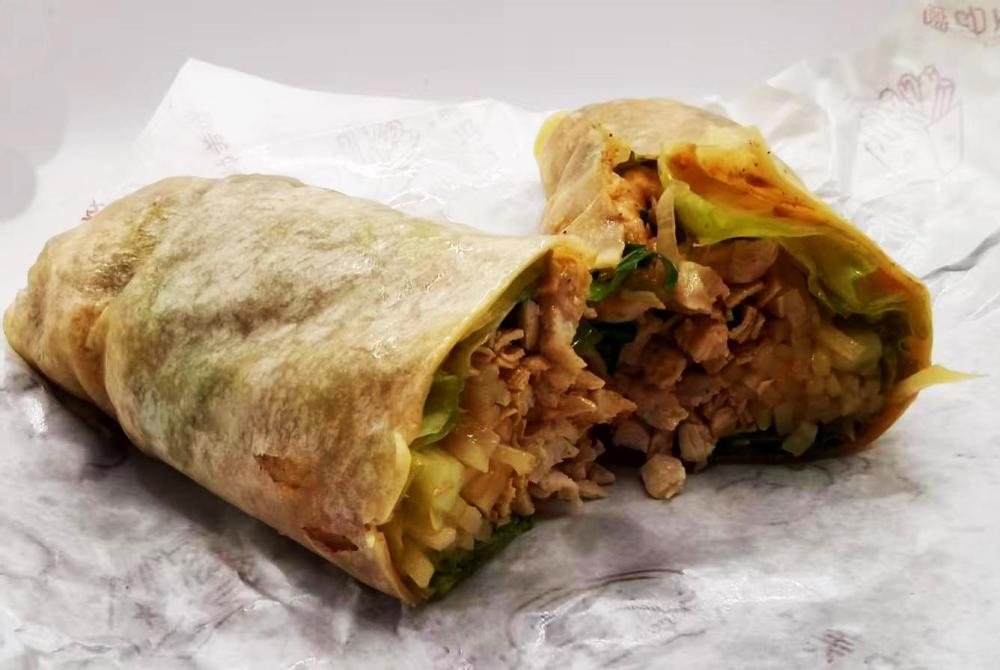

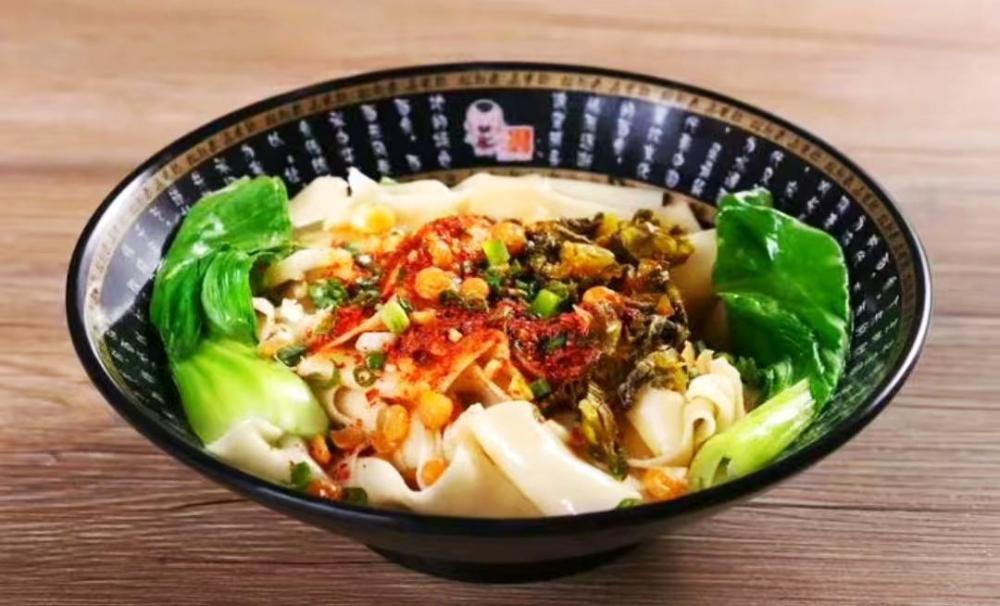

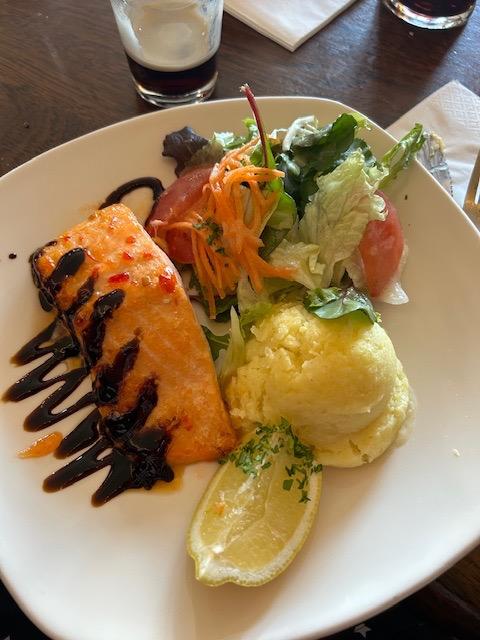


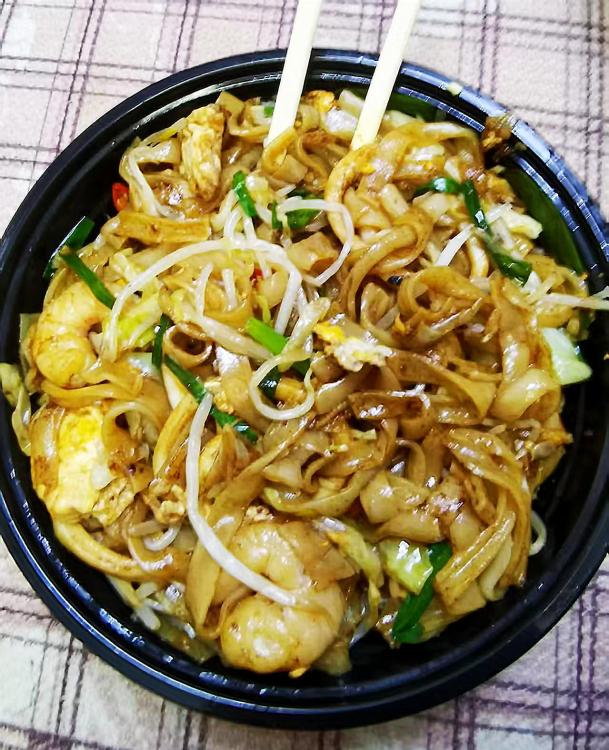

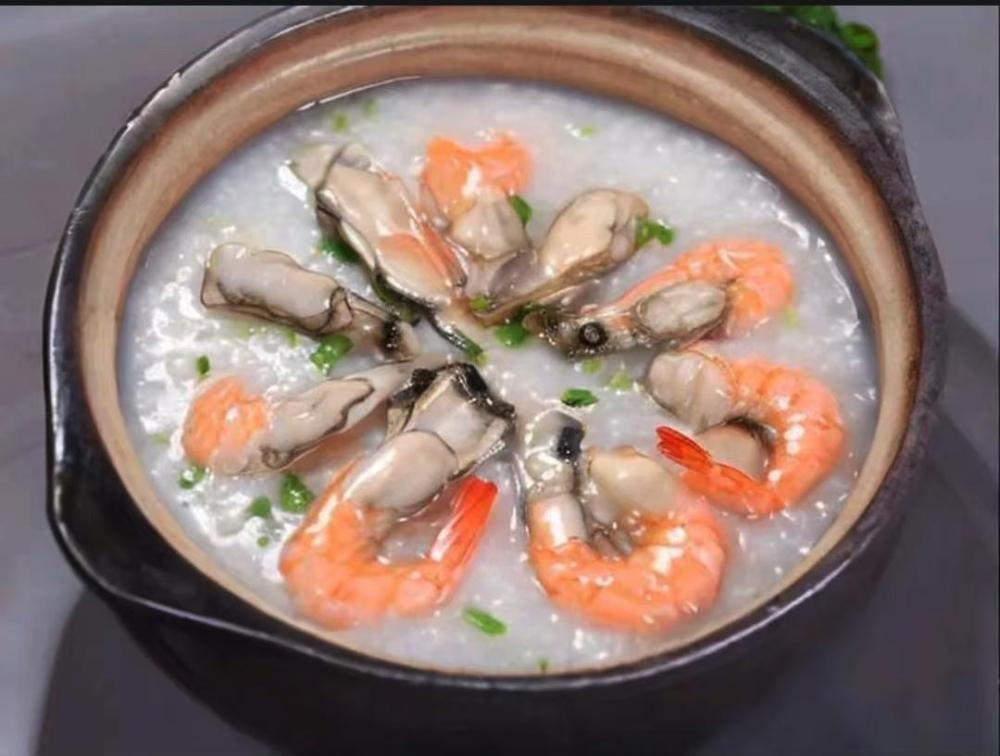


_svg.thumb.png.19b28d5f1b03db77402ef91c82c81064.png)
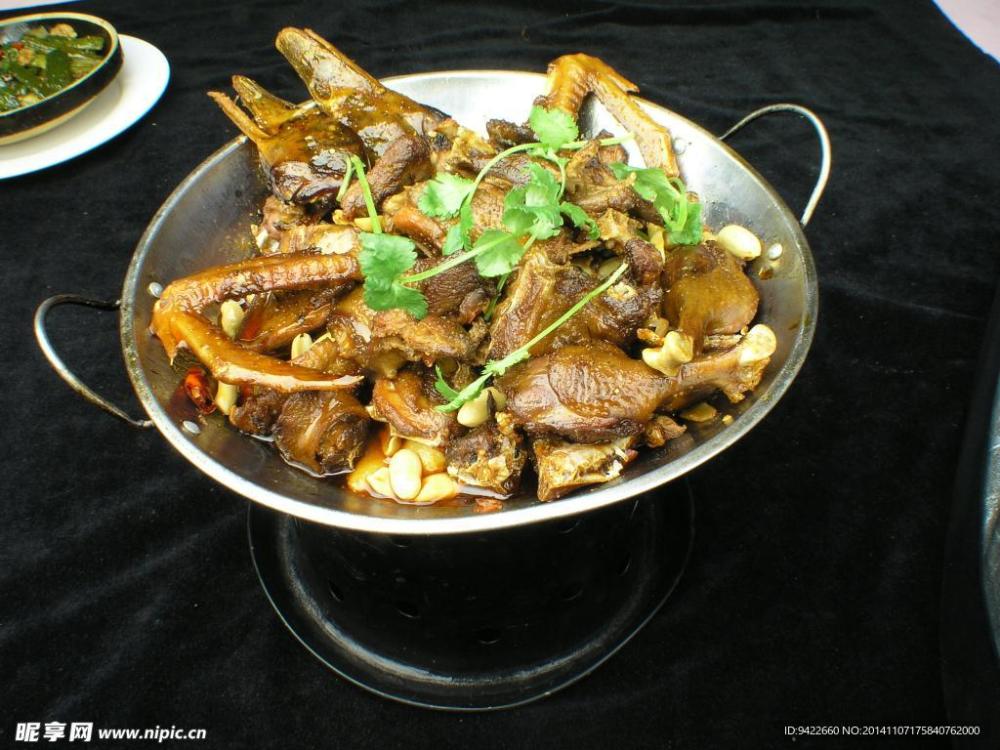

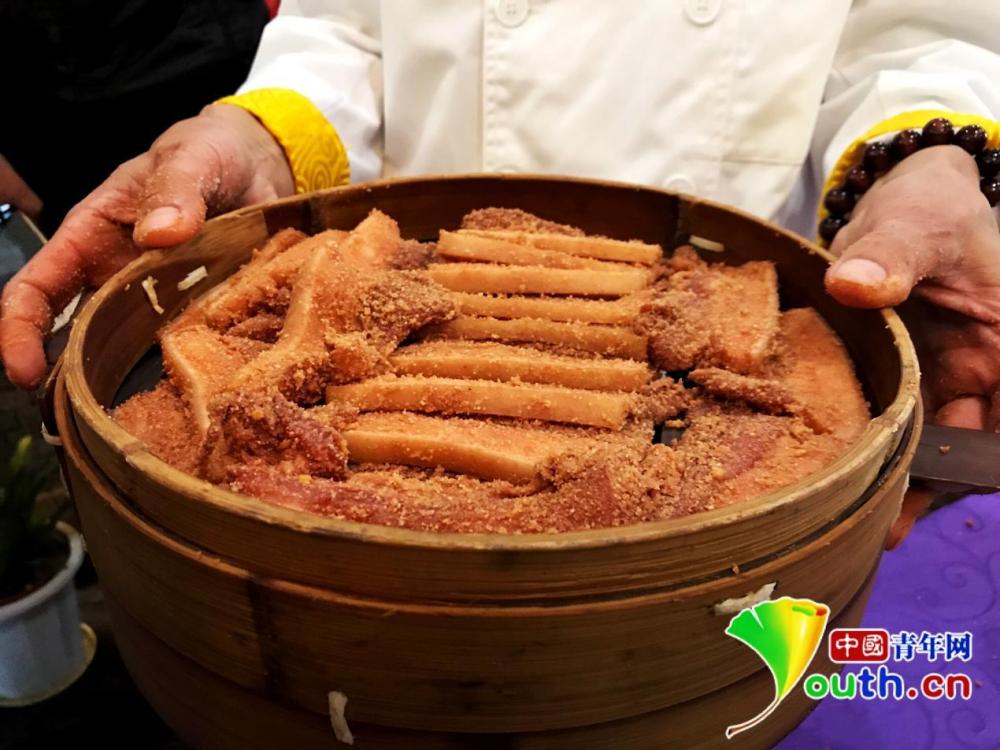
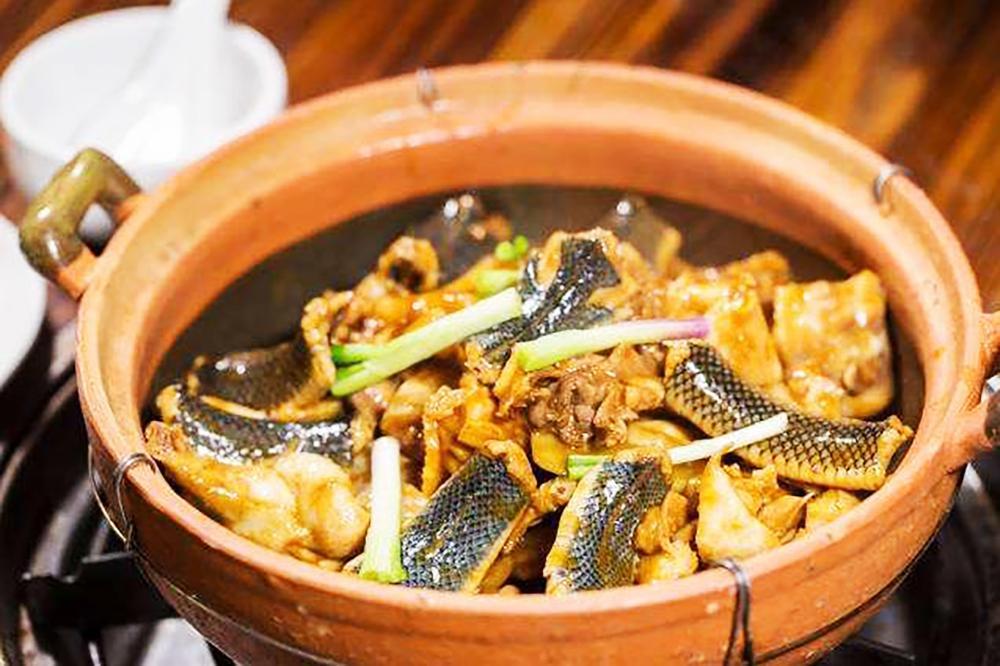
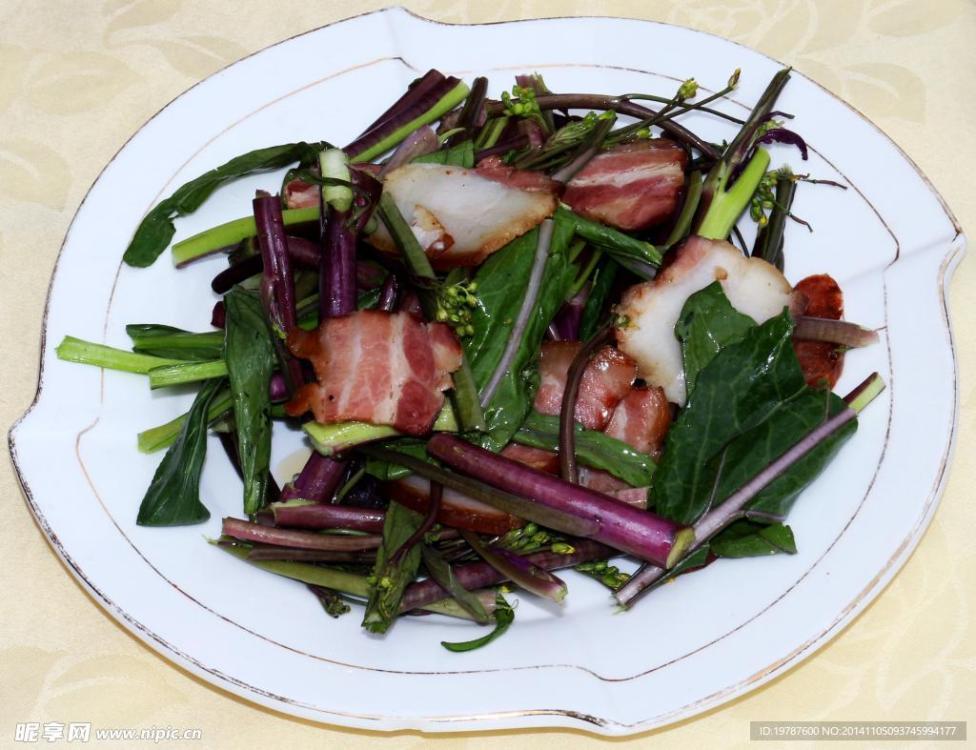
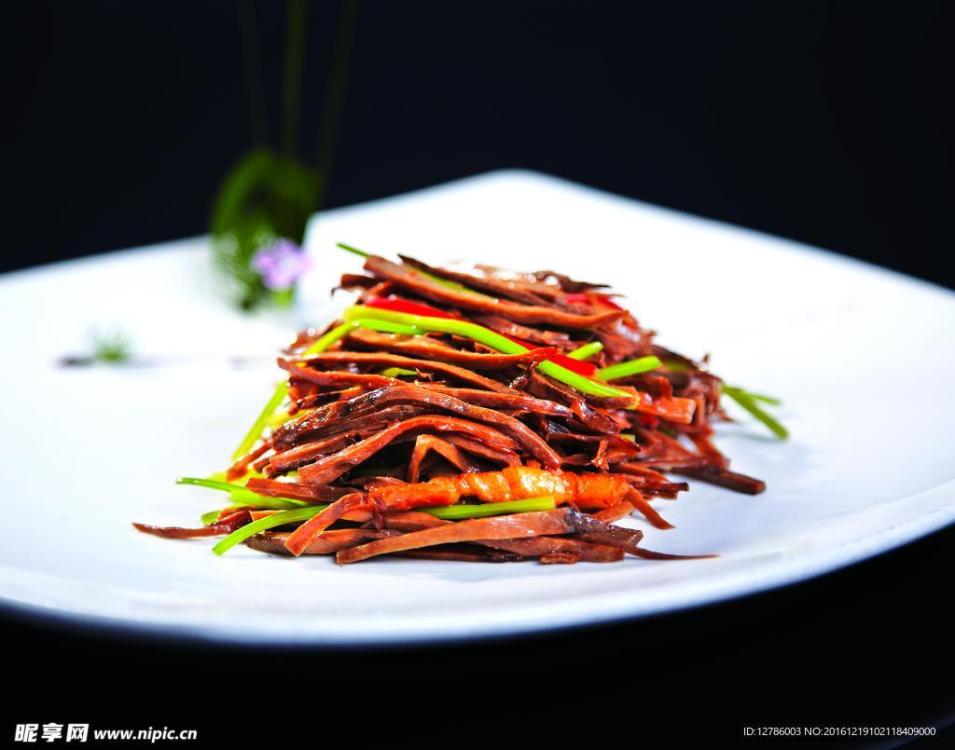
.jpg.ea00b4a351f93f480f874eeff6d3635d.jpg.96100dae0b5d448a1674511726472666.jpg)

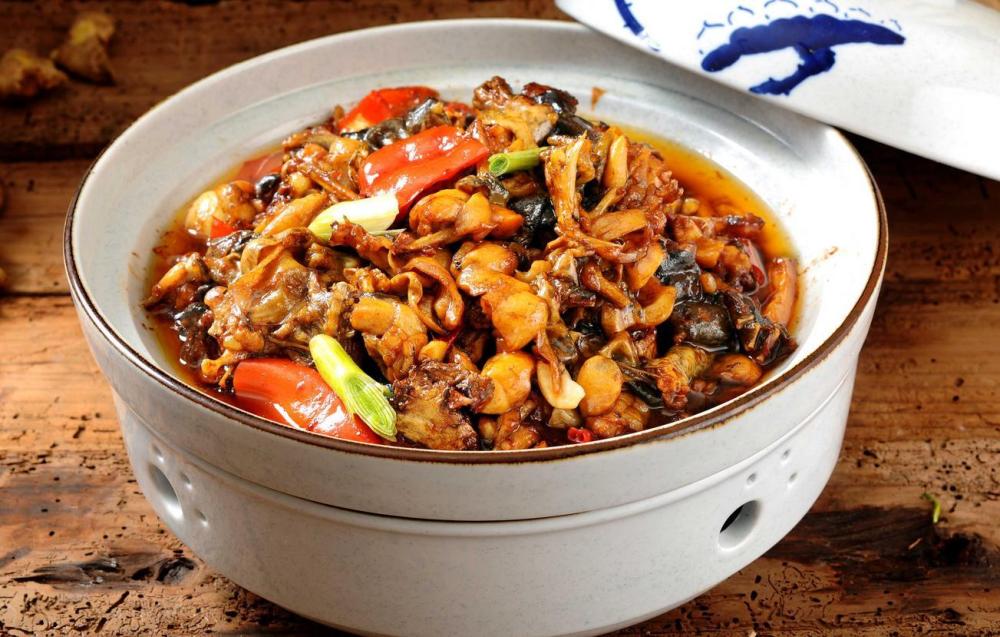
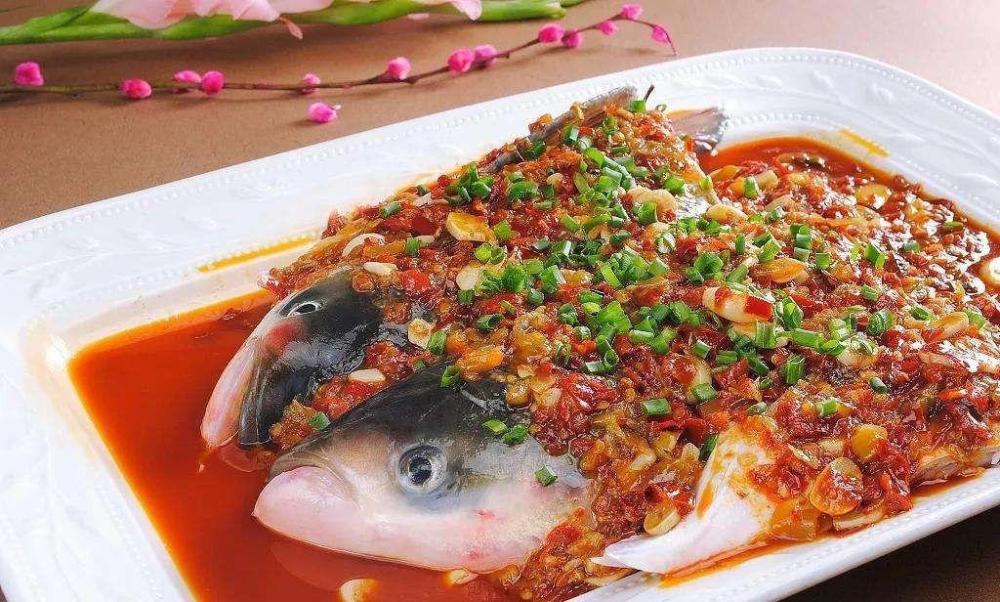
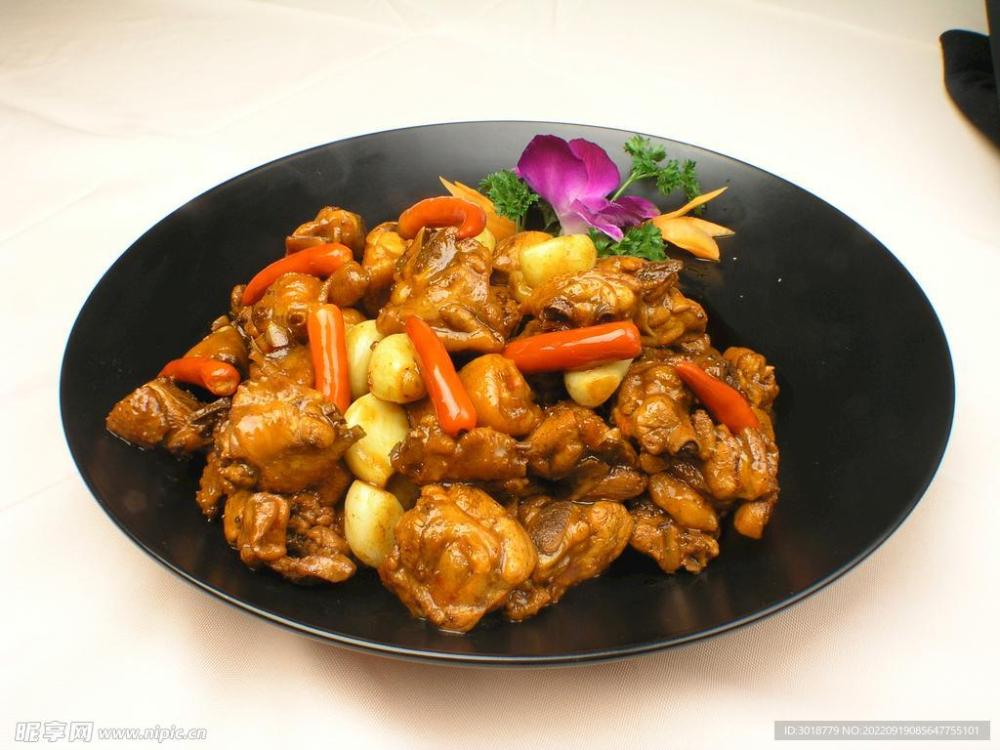
_svg.thumb.png.eae3cd4337624906799b5df5f39780b2.png)
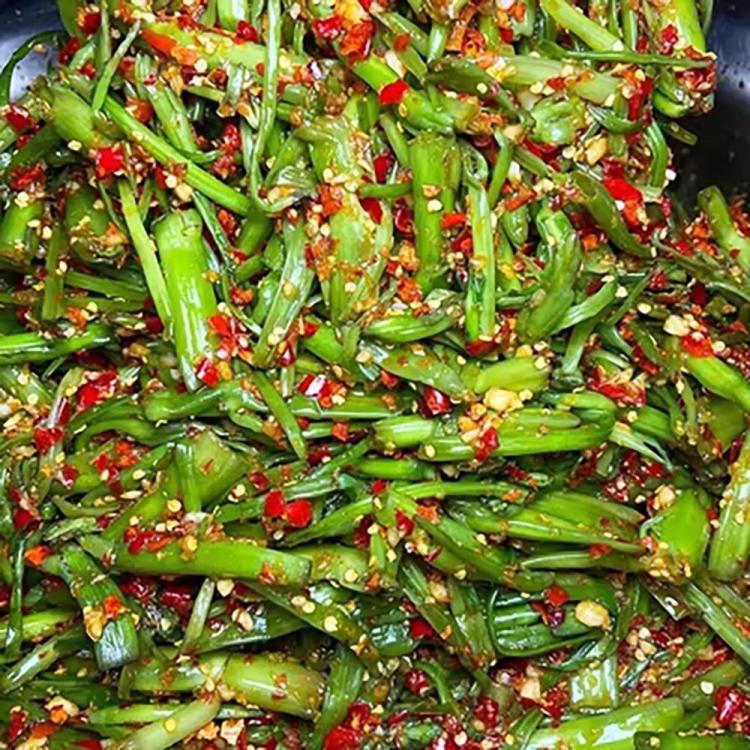

_svg.thumb.png.23279e9c0a68e756272b32d467d24e90.png)

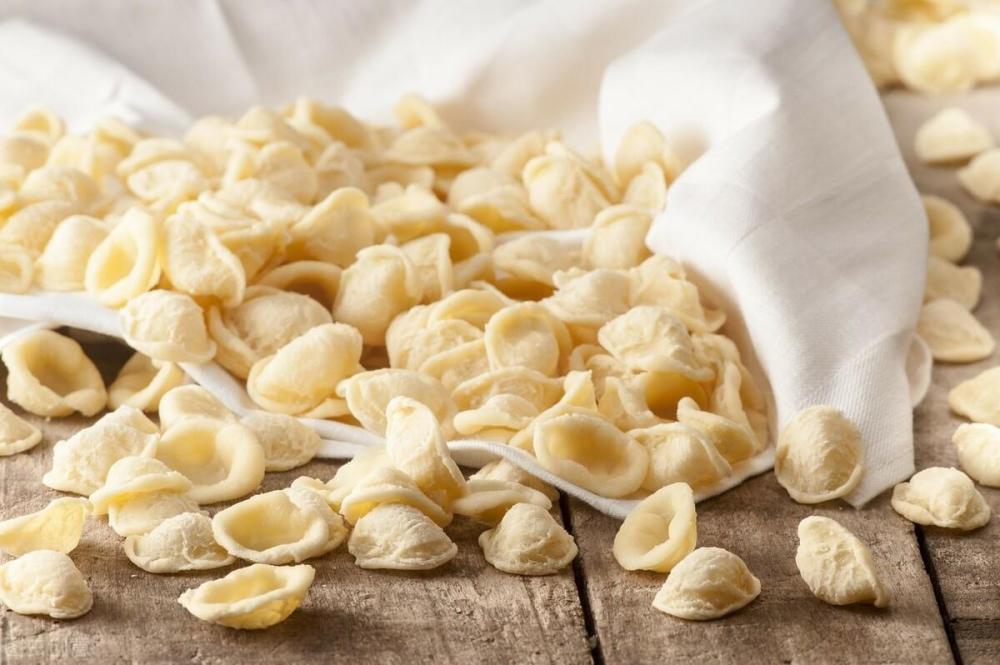
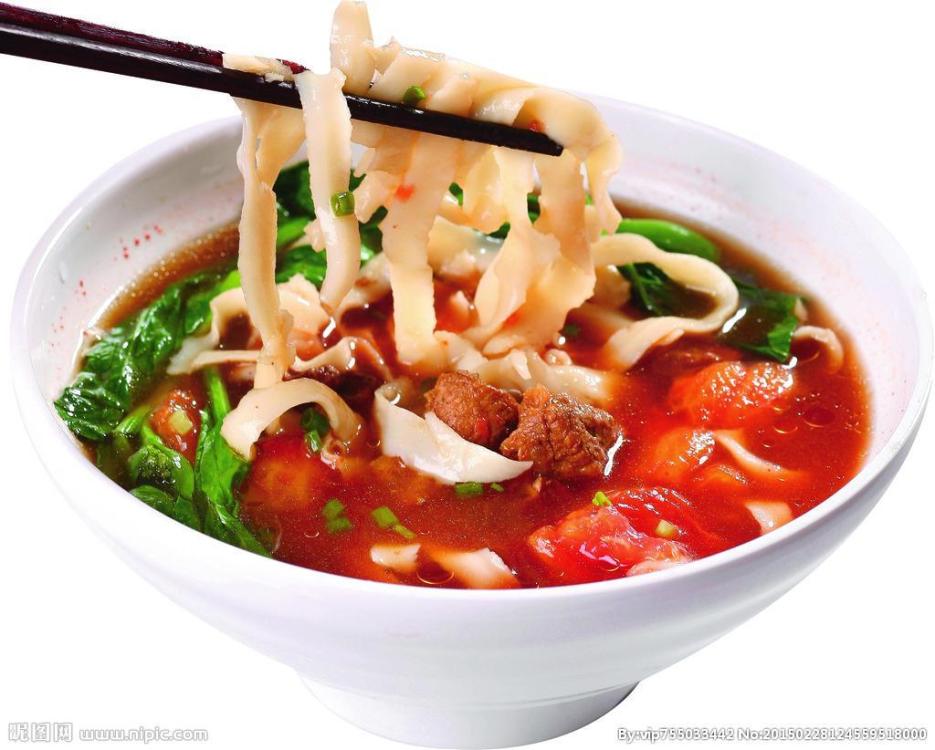
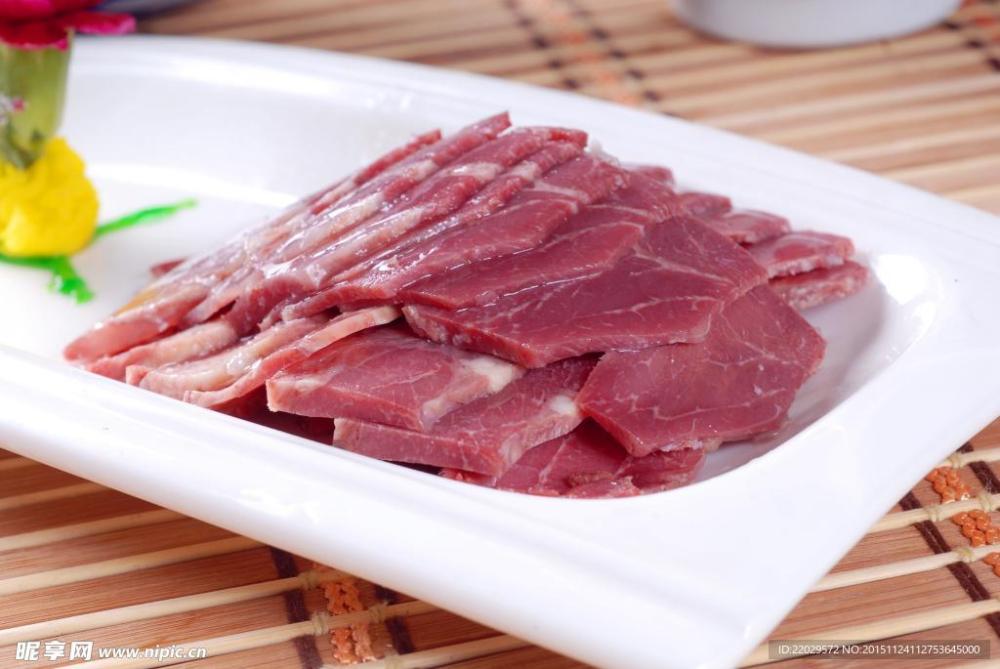
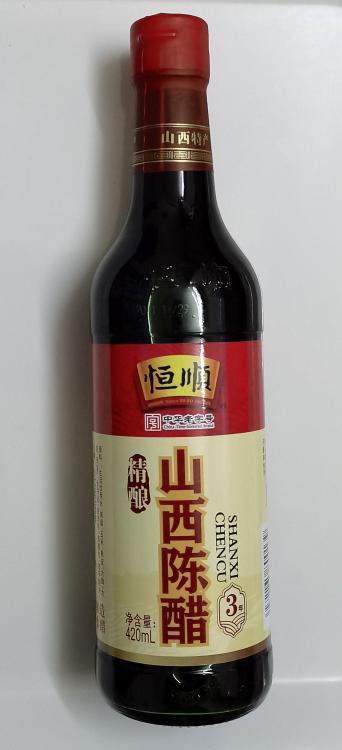

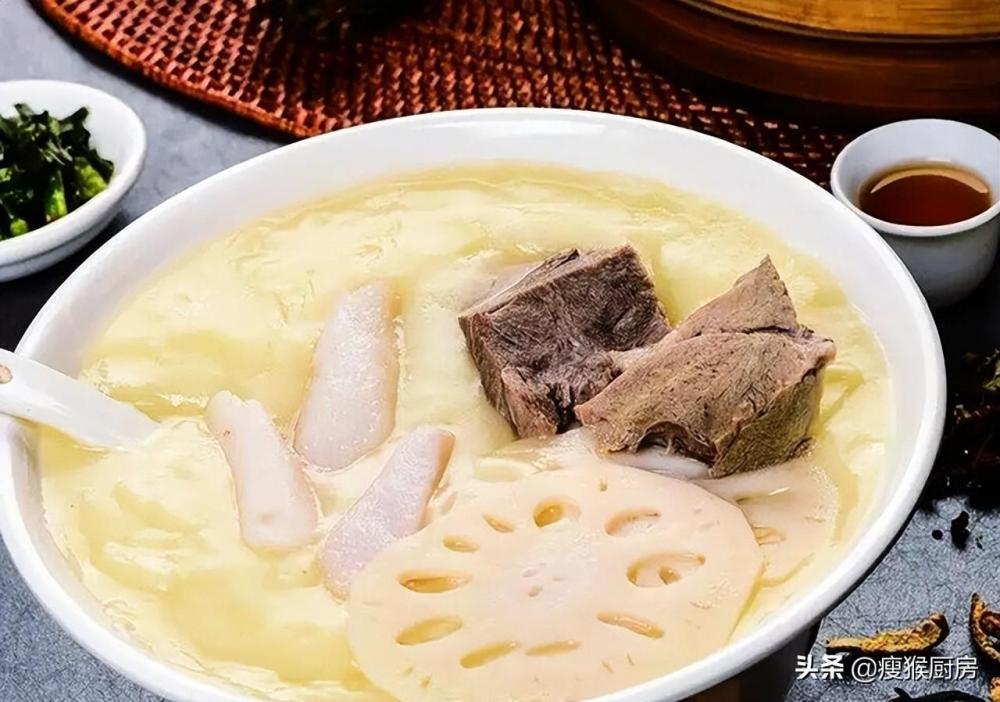

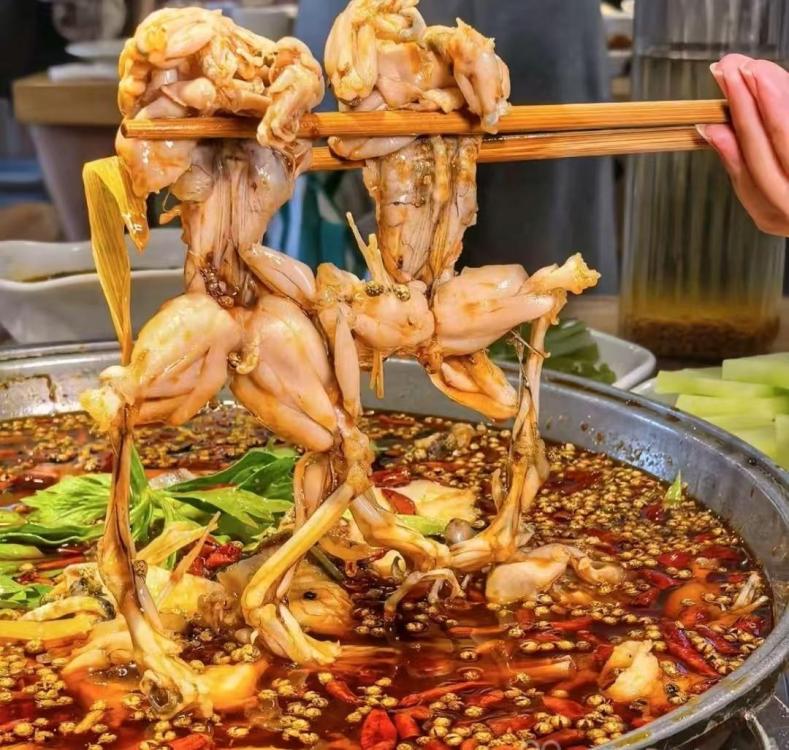
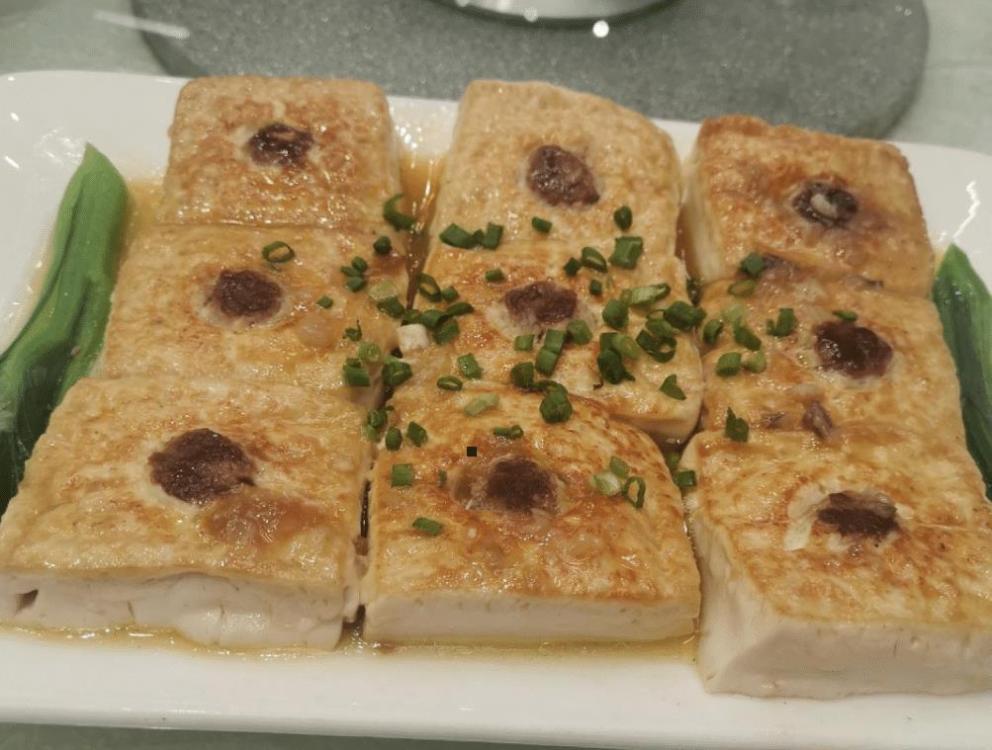
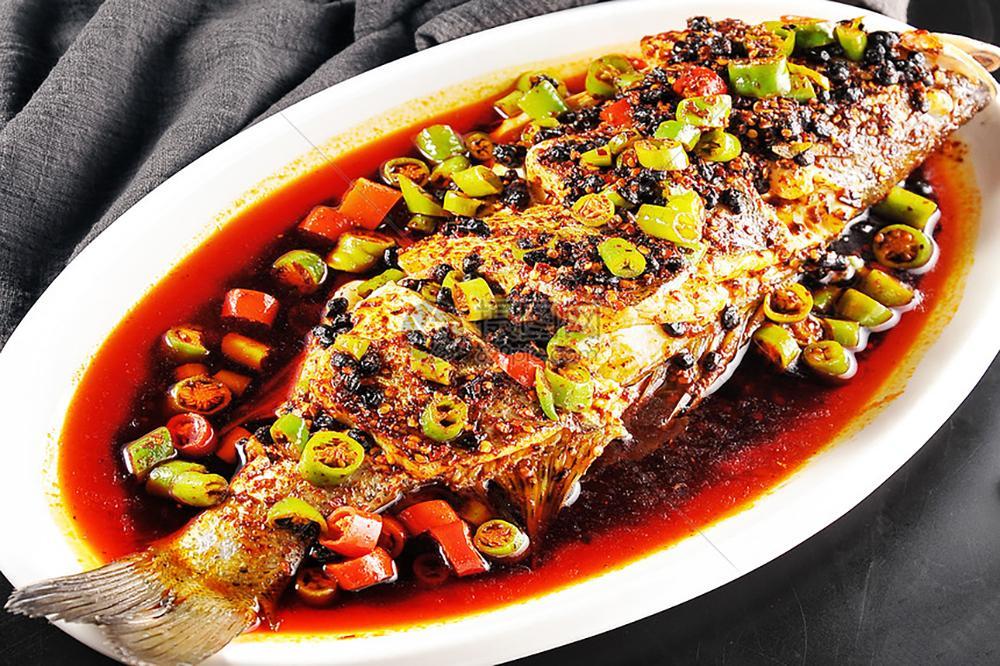
_svg.thumb.png.2c239c3f4be60479902c3581ad4afd5b.png)






.thumb.jpg.ff2c933b50efe62817a3cc18d35d6710.thumb.jpg.21e33bfc2bcabafbbd905a19aceca49a.jpg)
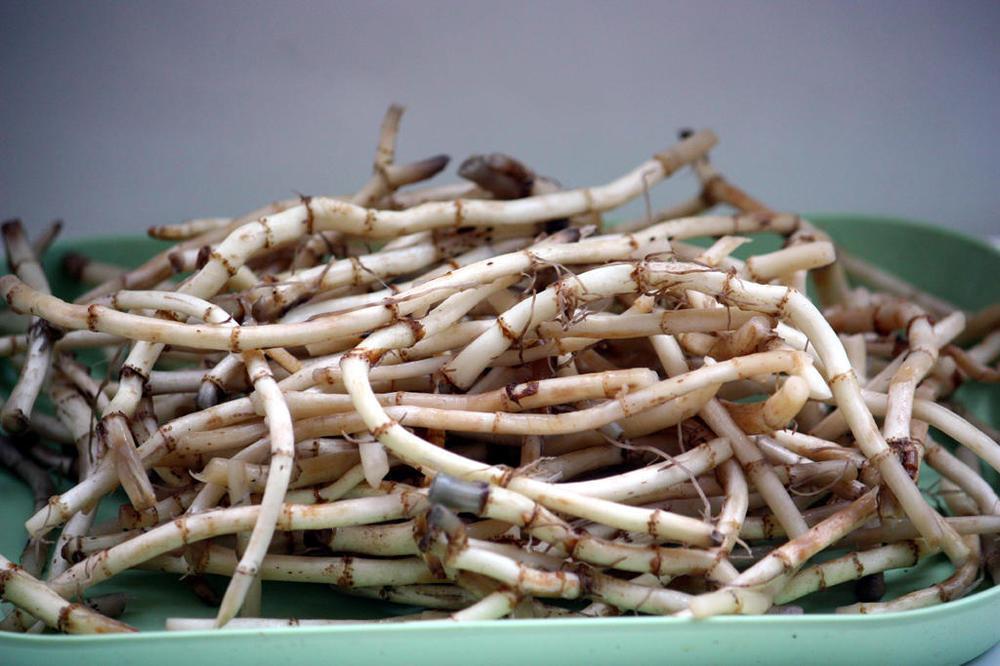
_svg.thumb.png.1e9cf8b65f59c289687c79b70a46dc5f.png)



